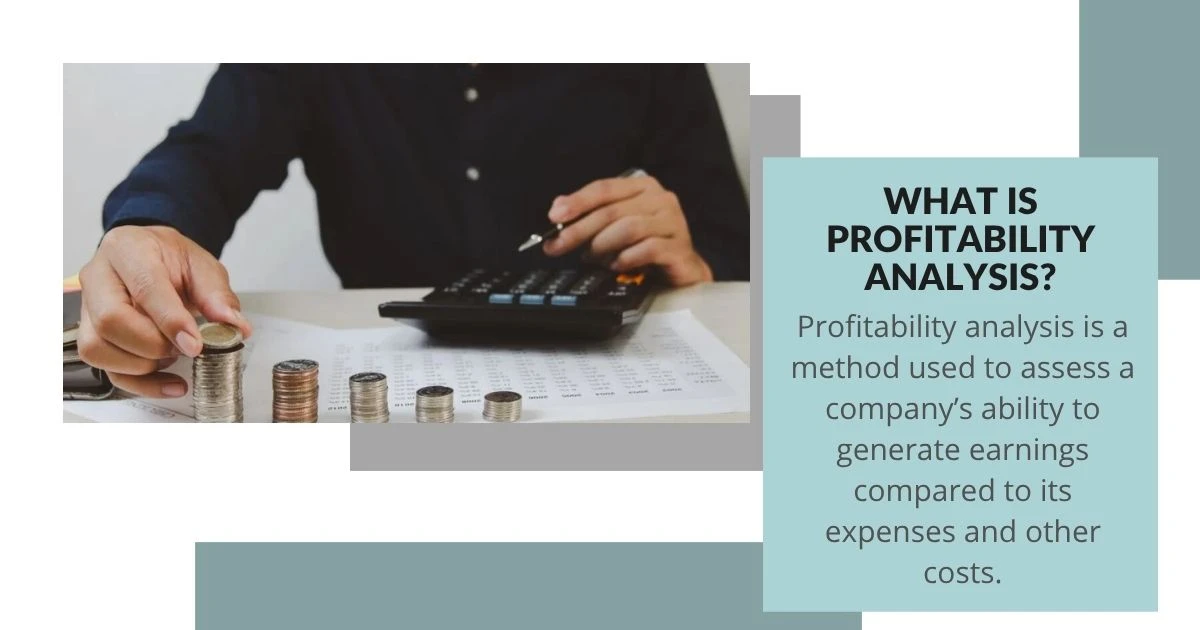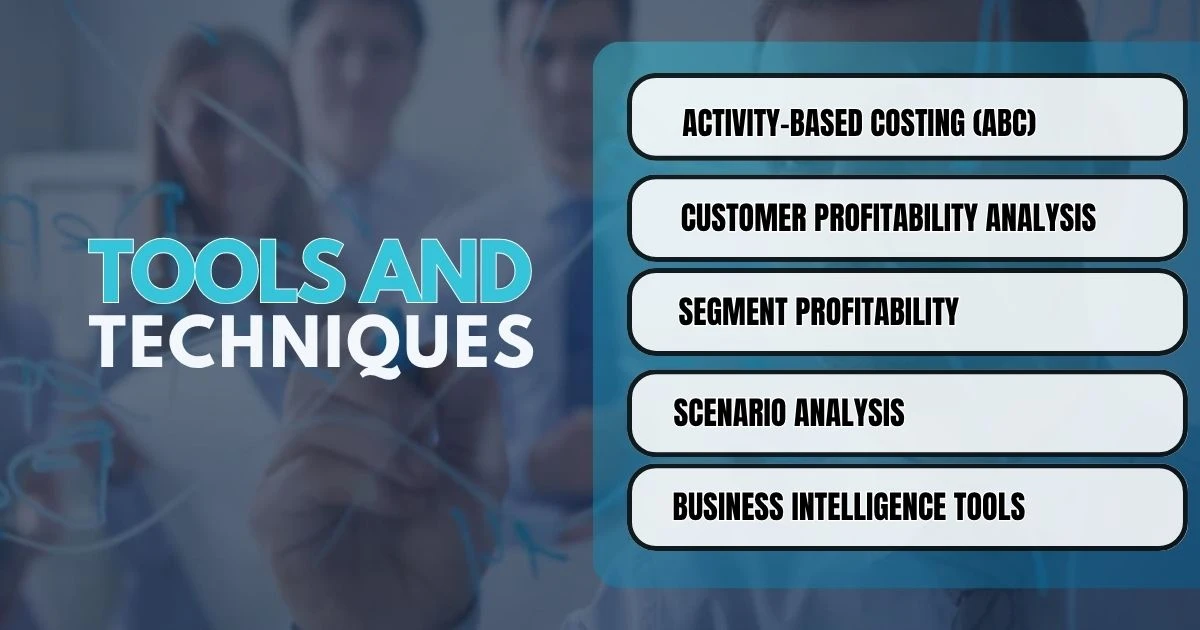When it comes to making strategic business decisions, one thing matters most: profitability. It’s not enough for a company to grow fast — it needs to grow smart. That’s where profitability analysis steps in. This isn’t just number crunching. It’s the art and science of uncovering where your profits come from — and where they don’t.
If you’re a CFO steering multimillion-dollar strategies or a small business owner trying to keep the lights on, profitability analysis is your financial compass.
But which customers are most valuable? Which products are draining resources? How do we scale without killing margins?
What is Profitability Analysis?

Profitability analysis is a method used to assess a company’s ability to generate earnings compared to its expenses and other costs. It goes beyond revenue, looking at net profit and the sources of that profit, by product, customer, region, or business unit.
It answers questions like:
- Are we making money from our best-selling product, or just covering costs?
- Which clients bring in profit, and which ones cost us more to serve?
- How efficient are our operations in different markets?
Think of it as an X-ray for your business model — exposing what’s really working and what’s just breaking even (or worse, losing money).
Why Profitability Analysis Matters
Businesses often confuse growth with profitability. But growing quickly without turning a profit can be a trap, especially in a tough economy. Profitability analysis ensures that growth aligns with value creation. It plays an important role in strategic decision-making, helping companies identify which products or markets to double down on—or exit.
It also improves resource allocation by directing time, capital, and talent toward the highest-yield areas. With effective profitability analysis, businesses can spot inefficiencies, eliminate unnecessary expenses, and address underperforming segments.
It also supports pricing optimization by aligning prices with actual contribution margins, rather than relying solely on market rates. Ultimately, profitability builds investor confidence, attracting more funding and reinforcing stakeholder trust.
Key Metrics in Profitability Analysis

To get the full picture, analysts rely on several profitability metrics. Here are the most commonly used:
- Gross Profit Margin – Shows how efficiently a company produces goods.
- Operating Profit Margin – Measures the profitability after operating expenses.
- Net Profit Margin – The bottom line — how much profit is kept after all expenses.
- Return on Assets (ROA) – Assesses how effectively assets generate profit.
- Contribution Margin – Evaluates profitability per unit of product.
These aren’t just financial figures — they’re signals, pointing you toward smart strategy.
Tools and Techniques

Profitability analysis is part of modern financial planning and analysis (FP&A). Companies use various methods depending on their industry, size, and data maturity:
Activity-Based Costing (ABC)
Assigns overhead and indirect costs more accurately to specific products or services, providing a clearer view of true product-level profitability. Instead of spreading general costs evenly across all products or departments, Activity-Based Costing (ABC) identifies the actual activities that drive overhead, such as machine setups, customer support, or quality inspections, and links those costs directly to the products or services that consume them.
Customer Profitability Analysis
Customer Profitability Analysis goes beyond total sales figures by examining the full cost associated with acquiring, supporting, and retaining each client, such as customer service time, delivery expenses, special discounts, and account management.
Segment Profitability
Segment Profitability analysis allows organizations to dissect financial performance across various dimensions, such as specific products, regions, customer types, or business divisions. By isolating the revenue and associated costs of each segment, finance teams can pinpoint high-performing areas, uncover underperforming segments, and allocate resources more strategically.
Scenario Analysis
Involves creating financial models to simulate how changes in key variables—such as pricing strategies, input costs, customer demand, or operational expenses—affect overall profitability. By exploring best-case, worst-case, and most likely scenarios, finance teams can assess risk, prepare for uncertainty, and make informed strategic decisions.
Business Intelligence Tools
Platforms like Power BI, Tableau, or modern AI-powered FP&A tools (e.g., Pigment, Datarails) provide real-time visualizations and predictive analytics. Business Intelligence (BI) tools transform complex financial and operational data into intuitive dashboards, interactive reports, and automated insights. These platforms enable finance teams to monitor KPIs in real time, identify trends and anomalies, and forecast future performance with greater accuracy.
How Profitability Analysis Saves Companies
Let us turn our attention to a retail company with three clothing lines: premium, mid-range, and budget. Sales figures show the budget line sells the most. But profitability analysis reveals that the mid-range line generates 60% of total profit, while the budget line barely breaks even due to high return rates and customer service costs.
By shifting focus — improving marketing and inventory for the mid-range segment — the company boosts its bottom line without even increasing total sales.
That’s the power of profitability insight.
Profits Over Popularity
Growth is good, but profit is better. Popular products don’t always mean profitable products. Profitability analysis ensures that every dollar spent and earned is aligned with long-term success.
In highly dynamic and performance-driven businesses that know where they make money and act on it, are the ones that survive and thrive. So the next time you’re looking at flashy revenue numbers, ask yourself: But how much of that is actual profit?
Because the future of business isn’t just about selling more. It’s about making more — smartly, sustainably, and strategically.
FAQs
What is the difference between gross profit margin and net profit margin?
Gross profit margin measures how efficiently a company produces goods by subtracting the cost of goods sold from revenue, while net profit margin shows the final profitability after all expenses, taxes, and interest are deducted.
How does financial planning and analysis (FP&A) relate to profitability analysis?
FP&A teams use profitability analysis to guide strategic decision-making, identify cost-saving opportunities, and forecast future performance based on real profit drivers.
What is activity-based costing (ABC), and why is it important?
Activity-based costing assigns overhead and indirect costs to specific products or services, providing more accurate insights into true profitability compared to traditional costing methods.
How do business intelligence tools help in customer profitability analysis?
Business intelligence tools like Tableau or Power BI visualize and analyze revenue versus service costs, making it easier to identify your most and least profitable customers.
